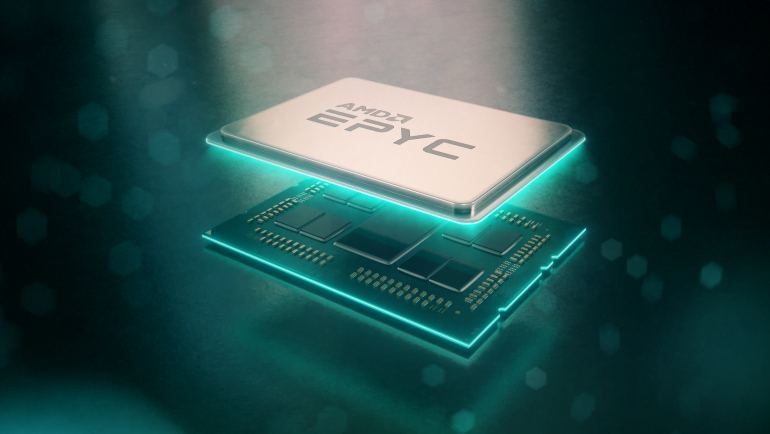In our recent update to Virtuozzo Hybrid Server we added support for AMD EPYC™ 7003-series CPUs, formerly codenamed “Milan”. Now Virtuozzo Hybrid Server and Virtuozzo Hybrid Infrastructure can take advantage of the latest AMD processor features.

AMD bills its new CPU series as “the new standard for the modern datacenter”. We asked AMD’s Alexey Nechuyatov, Senior Product Marketing Manager for Datacenter Products, about the direction they’re taking with EPYC and what they see as important for the cloud service provider market.
“There is a great momentum for AMD in the cloud datacenter space, from public and private clouds to VPS and dedicated bare metal,” he said. “AMD EPYC CPU-based servers offer great single-and multi-threaded performance, power efficiency and advanced security features, and this helps datacenter operators differentiate their offerings and improve rack space usage and server TCO, too.”
Compute and storage performance
According to Alexey, AMD EPYC-based servers offer up to 256 threads per two-socket system, which enables service providers to host more users and workloads per server. At the same time, AMD’s speedy “Zen 3” CPU micro-architecture delivers impressive single-threaded performance.

“The 7003 series processors comes with higher frequencies and IPC – Instructions per Cycle – than the previous generation 7002 family,” Alexey says. “This means leading performance for many different applications, including low-threaded code.”
“AMD EPYC platforms have the memory and I/O bandwidth to keep cores fed with data,” he adds. “All EPYC CPUs support 128 PCIe lanes, which means a single CPU can attach up to 24 NvMEs without oversubscription – perfect for software-defined storage systems.”
“In general, smaller footprint single-socket AMD servers provide enough cores and resources to replace many traditional dual-socket configurations, driving better performance per watt and per system dollar,” he says.
Confidential compute
AMD has also enabled a new kind of “confidential compute” based on cryptographic isolation of multiple VMs for supported hypervisors, including KVM and ESXi, without requiring any changes to application code.
“Multi-tenant environments need stepped-up security”, says Alexey. “AMD’s on-die Secure Processor governs encryption key management for secure server boot, system memory and VM protection. We offer a new layer of “data-in-use” protection, that is, for data residing in AMD EPYC cache, registers and system memory, with a negligible drop in application performance. Plus, there are up to 509 in-processor keys available to encrypt VMs and even containers.”
“Private and public clouds are primary targets for this technology. Hyperscalers like Google Cloud Platform and Azure have started offering “Confidential Compute” instances, running today exclusively on AMD EPYC- based server infrastructure, and I hope to see Virtuozzo supporting our security stack in the future,” Alexey says.
How much could you benefit?
AMD is firing on all cylinders in the cloud, and in the HPC and enterprise datacenter space. With support for EPYC in Virtuozzo, hosters and CSPs can differentiate by offering impressive HCI server technology that can help customers accelerate “time to business” as well as better OpEx.
“To avoid guesswork, search online for ‘EPYC tools’ to find AMD online TCO calculators for Bare Metal and virtualized deployments,” says Alexey. “To offer greater precision there are also more granular offline versions of these tools available under NDA for AMD business partners.”
How important is CPU to you?

As alternative cloud providers continue to grow and scale, CPU efficiency will play a role not just in the cost of running cloud infrastructure, but in the environmental impact it has, too.
“We see more AMD partners and customers interested in improving environmental sustainability and the reduction of greenhouse gas emissions,” Alexey says. “To address those environmental concerns, AMD has recently announced a new goal to reach 30x increase in CPU and GPU energy efficiency for accelerated HPC and AI workloads by 2025. We’ve also updated our Bare Metal TCO tool to include a new environmental module.”
As vendors like AMD continue investing in CPU and GPU design, we’re looking forward to the innovations still to come. Are you? Let us know what you think!